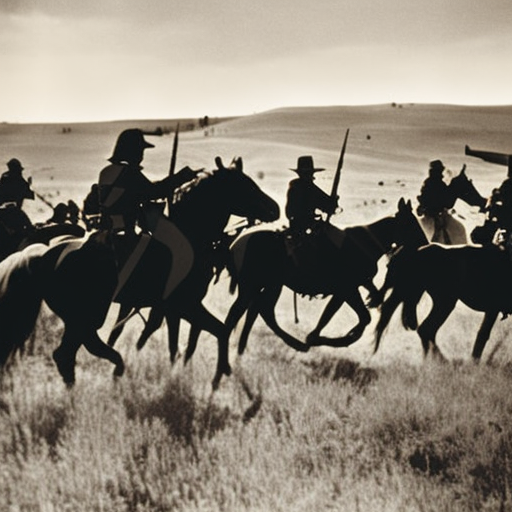Battle of Little Bighorn (1876)
The Battle of Little Bighorn, also known as Custer’s Last Stand, was a significant conflict between the Lakota Sioux, Cheyenne, and Arapaho tribes and the United States Army. It took place on June 25-26, 1876, near the Little Bighorn River in present-day Montana. The battle resulted in a decisive victory for the Native American forces and a devastating loss for the U.S. Army.
Background
In the mid-19th century, tensions between Native American tribes and the U.S. government escalated as settlers encroached upon Native lands in search of gold and other resources. The U.S. government sought to confine Native Americans to reservations, leading to resistance from many tribes. The Lakota Sioux, led by Sitting Bull and Crazy Horse, were among the most prominent opponents of U.S. expansion.
The Battle
In 1876, the U.S. government ordered the Lakota Sioux and their allies to return to their reservations by January 31 or face military action. However, many Native American tribes refused to comply and instead gathered in a large encampment along the Little Bighorn River. Lieutenant Colonel George Armstrong Custer, a Civil War hero, was sent to confront the Native American forces.
On June 25, Custer divided his 7th Cavalry into three battalions and launched a surprise attack on the Native American encampment. However, the element of surprise was quickly lost, and Custer found himself vastly outnumbered by the Native American warriors. The Lakota Sioux and their allies fought fiercely, using their superior knowledge of the terrain to their advantage.
Custer’s battalion was quickly overwhelmed, and he and his men were killed within hours. The other two battalions, led by Major Marcus Reno and Captain Frederick Benteen, also faced heavy resistance but managed to hold their positions. However, they were unable to provide support to Custer’s battalion.
Aftermath
The Battle of Little Bighorn was a major victory for the Native American tribes involved. It was a significant blow to the U.S. Army and a symbol of Native American resistance against U.S. expansion. The battle also marked the beginning of a renewed effort by the U.S. government to subdue Native American tribes.
In the aftermath of the battle, the U.S. Army launched a series of retaliatory campaigns against the Lakota Sioux and their allies. The tribes were eventually forced onto reservations, and their way of life was severely disrupted. Sitting Bull and his followers fled to Canada but later surrendered in 1881.
The Battle of Little Bighorn has remained a subject of fascination and controversy. It has been the focus of numerous books, films, and historical debates. The battle is often seen as a symbol of Native American resistance and the tragic consequences of U.S. westward expansion.
Conclusion
The Battle of Little Bighorn was a significant event in the history of the American West. It represented a major victory for the Native American tribes involved and a devastating loss for the U.S. Army. The battle highlighted the ongoing conflict between Native Americans and the U.S. government over land and resources. It also had a lasting impact on the relationship between Native Americans and the United States, shaping the course of history for both parties involved.












